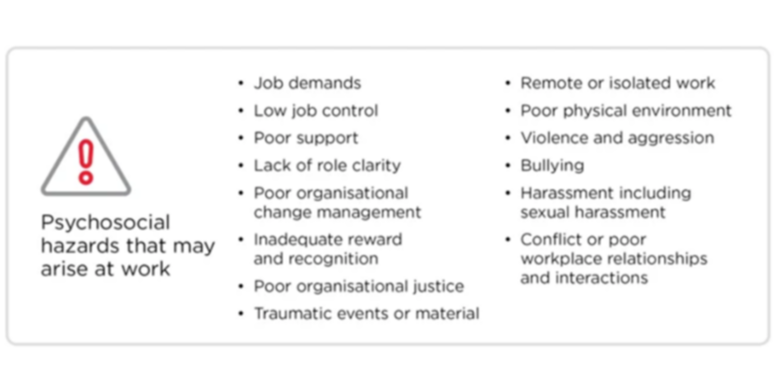The Ideagen Education Risk Report 2024 provides key findings from a survey issued by Ideagen in association with School Governance. The survey was conducted to help the education sector better understand the risk and compliance issues currently impacting schools. Close to 200 respondents, consisting mainly of school leaders and non-teaching staff from independent, Catholic and government schools across Australia, answered the survey.
Respondents identified human resources risks, health and safety risks, financial risks and child safety risks as the top four risks that would be impacting them over the next 12 months.
The report found that in relation to human resources risks impacting school staff:
- almost half of all respondents are being greatly impacted by staff shortages, workload concerns, increased cases of stress and burnout, and difficulties in attracting and retaining staff. The percentage being greatly impacted has increased by around 10 per cent from the 2023 results in all these areas.
- many more schools are being greatly impacted by instances of occupational violence with 17 per cent of schools being ‘greatly impacted’ by this issue. This is up 7 per cent from last year.

The Top Human Resources Risks Identified Are Also Common Psychosocial Hazards in the Workplace
The human resources risks identified above are also some of the common psychosocial hazards that schools as employers must manage under Work Health and Safety (WHS)/Occupational Health and Safety (OHS) laws. Under those laws, an employer has a duty to provide and maintain a working environment that is safe and without risks to health, so far as reasonably practicable. This includes identifying psychosocial hazards risks to a worker’s health and safety, and putting in control measures to eliminate those risks, or if that is not possible, to minimise those risks as much as possible.
As highlighted in a previous School Governance article, Safe Work Australia has introduced a Model Code of Practice: Managing psychosocial hazards at work (Psychosocial Hazards Code). It provides practical guidance on how to identify psychosocial hazards and information regarding how to assess and control the risks[1].
What Are Psychosocial Hazards?
Psychosocial hazards are hazards that may arise from the design or management of work, the working environment, workplace interaction and behaviours. Examples of psychosocial hazards are listed in the diagram below.

Diagram taken from the Managing psychosocial hazards at work, code of practice.
Psychosocial risks can cause both physical and psychological injuries. As explained in the Psychosocial Hazards Code, the severity of psychological injuries varies, but in comparison to physical injuries, on average, they require staff to take more time off work and are more costly to employers.
What Should Schools Do to Identify and Manage Psychosocial Risks in Their Schools?
The Education Risk Report has highlighted areas of risk of harm to employees that you may believe are problematic in your school. But how do you confirm that belief and identify the specific risks in your school?
You can do this by ensuring that your risk management processes do the following:
1. Identify hazards – find out what could cause psychosocial harm:
- Consultation with staff - this is not only a good discovery tool but is mandatory under WHS/OHS law. Prior to consultation, provide your staff with information to help them understand and recognise psychosocial hazards. Effective consultation should allow for differences in how staff may describe hazards (for example, they may say they feel ‘burnt out’ or ‘emotionally exhausted’ about their work) and seek to identify the underlying causes. Look for trends.
- Use surveys – these can be anonymous to protect staff against stigma or for those who find direct consultation confronting, have a good reach to employees who may be remote or in different locations, and give staff time to consider how they feel about the effects of their work or work environment.
- Observe work and behaviours – changes in an employee’s behaviour, such as diminished performance or withdrawal from work, may indicate early negative health impacts from psychosocial hazards.
- Review available information – for example, staff complaints and investigation, records of injuries or workers’ compensation, exit interviews, Health and Safety Committee meeting records, etc.
- Encourage reporting and have a reporting mechanism – it is important to ensure that reporting mechanisms are clearly communicated to employees.
2. Assess the risks
Once you have identified psychosocial hazards in your workplace, the next step is to assess the risks they create by carrying out a risk assessment. It will help you determine how severe the risks are and what is reasonably practical in managing the risks.
Consider the duration, frequency and severity of the risk. Psychosocial risks increase when exposure to hazards is more severe (e.g. exposure to a traumatic incident), more frequent (e.g. regularly performing high-pressure tasks without adequate support) or longer in duration (e.g. high job demands over weeks or months).
3. Control the risks
Once you have identified the hazards and have assessed the risk they create, you are in a position to eliminate or control the risk as much as possible. Identify and select as many control measures as possible for each risk and be broad thinking about the possibilities.
In your consultation phase, you may have identified control measures you hadn’t already thought of. For example, if your staff are experiencing a rise of violent behaviour towards them from students, you may have heard that this tends to be after a certain activity, or narrowed to a particular cohort, and you can then tailor your control measures to include specific actions for those circumstances. Controls that are reliable and offer the highest level of protection are the most effective. For example, increasing supervision during that activity or for that particular cohort of students, together with other behaviour management strategies, could be a good combination of controls for that particular situation.
4. Test the control measures
Allow enough time for your staff to adjust to any changes before assessing the effectiveness of the control measures. During this change period, frequently check in with your staff to see how they think the measures are working and consider what training, instruction, or supervision your staff needs to ensure the controls are implemented effectively.
5. Review control measures regularly
As well as having a set cadence for review, as explained in the Psychosocial Hazards Code, you should also review control measures:
- when the control measures are not eliminating or minimising the risks so far as is reasonably practicable
- before a change at the workplace that is likely to give rise to a new or different health and safety risk that the control measures may not effectively control
- if a new hazard or risk is identified
- if the results of consultation indicate a review is necessary
- if a Health and Safety Representative (HSR) requests a review because they reasonably believe one of the above has occurred and it has not been adequately reviewed already.
You can use the same methods as in the initial hazard identification step to check control measures. You must also consult your staff and their HSRs.
The Psychosocial Hazards Code also identifies some good questions to ask at the review stage:
- Are control measures working effectively, without creating new risks?
- Have staff reported feeling stressed or are they showing signs of harm?
- Have all psychosocial hazards been identified?
- Have risks changed or are they different to what you previously assessed?
- Are staff actively involved in the risk management process?
- Are staff openly raising health and safety concerns and reporting problems promptly?
- Has instruction and training been provided to all relevant staff?
- Are there any upcoming changes that are likely to result in a worker being exposed to psychosocial hazards?
- Are new control measures available that might better control the risks?
- Have risks been eliminated or minimised as far as is reasonably practicable?
Please refer to the Psychosocial Hazards Code for more information on how to manage psychosocial risks in your schools.
For more information about the psychosocial risks identified by almost 200 school leaders, we invite you to read our Education Risk Report.
[1] Regulations addressing psychosocial hazards have commenced in all harmonised states and territories, supported by the Psychosocial Hazards Code (or similar). Victoria is in the process of developing Occupational Health and Safety (Psychological Health) Regulations, which aim to provide clearer guidelines for employers on identifying and controlling risks to protect staff from mental injury. WorkSafe Victoria's 2021 guide, ‘Preventing and managing work-related stress,’ offers similar guidance to that of the Psychosocial Hazards Code.
.png?width=600&height=200&name=Education%20Risk%20Report%202024%20-%20EDM%20Banners%20(3).png)
%20Risk%20Report%20-%20LP%20Feature%20Image.png)



.png?width=600&height=200&name=Education%20Risk%20Report%202024%20-%20EDM%20Banners%20(3).png)

